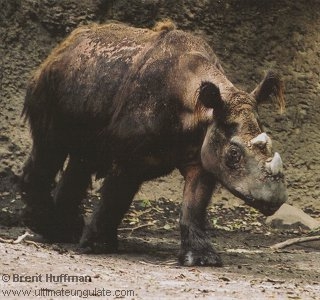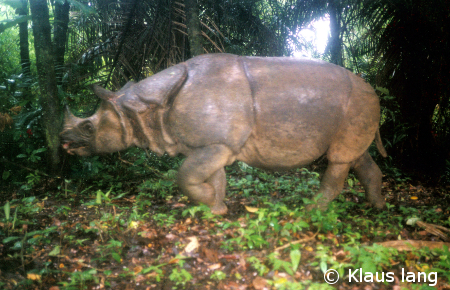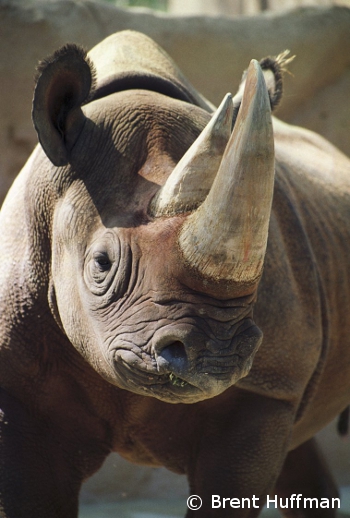September 22nd is World Rhino Day, in honour of that we are dedicating our species of the week to not one, but three Rhino species. Of the five rhino species in the world 4 are EDGE species and 3 are high ranking on our top 100 EDGE mammals list.
Belonging to the family Rhinocerotidae, Rhinoceros, with their characteristic large size, are some of the few species of mega-fauna surviving today. All species of rhinos are herbivores and can weigh more than a ton, yet some specialize in grazing and others in browsing. Rhinos can have 1 or 2 horns made of keratin, the same material that hair is made of.
Rhino horns however, are valuable ingredients in traditional Chinese medicine. They are believed to aid in treatment of fever, delirium and most recently rumoured to cure cancer.
The horns have also traditionally been used to make dagger handles in Yemen and Oman. As a result of these profitable markets rhino horn a valuable illegal product, leading to the illegal poaching of hundreds of animals every year. Having also suffered incredible habitat loss, rhino species have been brought to the brink of extinction. More than 90 percent of the world’s rhinos have disappeared since 1970. But there is hope if conservation efforts are effective.
Meet our three priority EDGE Rhinos:

This two-horned rhino is the smallest and most threatened of the five living rhinoceros species. It is sometimes referred to as the ‘hairy rhino’ because of the long coarse hair that covers its body. The species leads a solitary life deep in the rainforests of South East Asia, where it has survived virtually unchanged for a million years. Human activities have brought the species to brink of extinction. Extensive deforestation and poaching for the horn have caused a dramatic decline in rhino numbers, and it is estimated that fewer than 275 individuals survive today in small and highly fragmented populations.
Black Rhinoceros (Diceros bicornis) (number 11 of top 100)
Black rhinos and white rhinos are not named for their colours, but for the shape of their lips. The black rhino has a prehensile (or grasping) upper lip, which it uses to draw plant material into its mouth. This two-horned rhinoceros has a reputation for being unpredictable and dangerous. As a result it has suffered much more persecution than other rhinos. The total population decreased by a massive 96% between 1970 and 1992, the largest decline of any of the rhino species. Four subspecies are recognised, of which three are considered Critically Endangered.

With fewer than 60 individuals remaining, the Javan rhino is the rarest of all the living rhinoceros species. It has a single horn and deeply folded skin that resembles armour plating. Like other rhinos, the species eats plants and spends most of its time wallowing in pools of mud to keep cool. Two subspecies exist, one in Vietnam and the other in Java. Both have been reduced to a single population as a result of extensive habitat loss and poaching for their horns. Although these populations are now protected in national parks, they remain at risk from poaching, and the small population sizes mean that they are extremely vulnerable to disease and natural disasters.
Click here to find out how you can support EDGE of existence with our conservation efforts.
